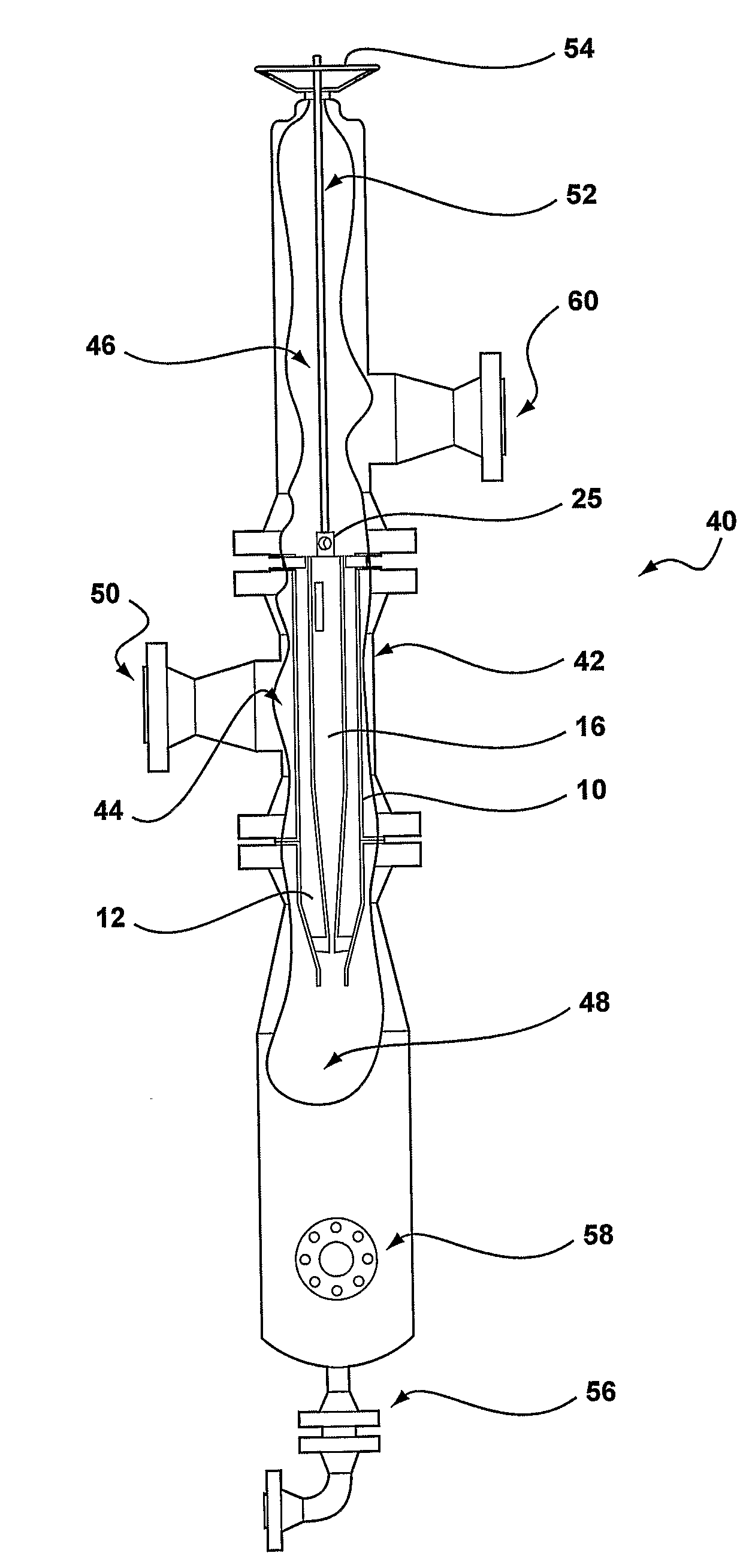Cyclone Assembly and Method For Increasing or Decreasing Flow Capacity of a Cyclone Separator in Use
a technology of cyclone separator and assembly method, which is applied in the direction of water cleaning, separation process, borehole/well accessories, etc., can solve the problem that the system is not practicable when considering sub-sea processing
- Summary
- Abstract
- Description
- Claims
- Application Information
AI Technical Summary
Benefits of technology
Problems solved by technology
Method used
Image
Examples
Embodiment Construction
[0061]Referring firstly to FIG. 1, in a typical gas field, the flow rate to be passed through a cyclone separator, during the course of the life of the gas field, may increase from 10 m3 / hr to 100 m3 / hr. The pressure drop associated with such an increased flow rate is approximately from 85 bar down to 10 bar. It can therefore be seen that a cyclone separator may be required to operate over a flow rate range of 90 m3 / hr, whilst maintaining efficient separation.
[0062]Referring to FIG. 2, a cyclone assembly is indicated generally at 10 and comprises a cyclone chamber 12, formed by an outer cyclone liner 14, and an inner cyclone liner 16. The inner cyclone liner 16 is adapted to be displaced along a longitudinal axis 18 of the outer cyclone liner 14 between an operative position, as viewed in FIGS. 2 and 3, and inoperative position, as viewed in FIG. 4, and explained further below.
[0063]A seal collar 20 is provided at a lower end of the inner cyclone liner 16. The seal collar 20 is inte...
PUM
| Property | Measurement | Unit |
|---|---|---|
| pressure | aaaaa | aaaaa |
| density | aaaaa | aaaaa |
| flow rate | aaaaa | aaaaa |
Abstract
Description
Claims
Application Information
 Login to View More
Login to View More - R&D
- Intellectual Property
- Life Sciences
- Materials
- Tech Scout
- Unparalleled Data Quality
- Higher Quality Content
- 60% Fewer Hallucinations
Browse by: Latest US Patents, China's latest patents, Technical Efficacy Thesaurus, Application Domain, Technology Topic, Popular Technical Reports.
© 2025 PatSnap. All rights reserved.Legal|Privacy policy|Modern Slavery Act Transparency Statement|Sitemap|About US| Contact US: help@patsnap.com



